
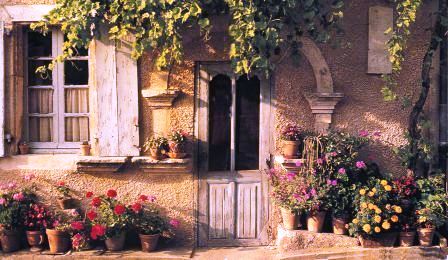
COLLIOURE
E15, A7, 22 km east of exit 43 le Boulou; north: exit 42; south: exit 43 /30 km/
As you approach Collioure you are greeted by sweet little houses in all shades of brick pink and ochre yellow, embedded in the greenery of pine trees of the darkest hue. And there it lies, down in the bay, this little pearl of a town, one of the very few along the Mediterranean coast to have been spared exploitation and left free to keep its original, genuine charm.
This place has been used as a harbour since 500 years B.C., first by the Phenicians, then by the Romans. At the harbour a “castrum” was built, a fortification which was captured by the Visigoths in the 7th century. In the 12th century it fell into Aragonian hands, after a long period of invasions by Arabs and Normands and other tribes. There followed a time when possession of the fortress was juggled between Mallorca, Aragon, Spain and, finally, France. During the Middle Ages the old Roman “castrum” was turned into a royal palace which could accommodate the whole court and in the 12th and 13th centuries it served as summer residence for the Mallorcan royal family.
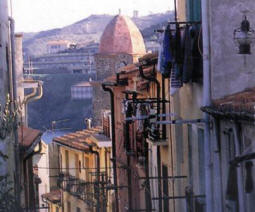
SIGNIFICANT TRADE CENTRE
Not only was Collioure of military importance, it was also a flourishing trade- and fishing harbour. Amongst other goods exported from here were fabrics from Perpignan, and to this day anchovies, sardines and tuna is being fished here just like in the olden days. The fishing boats, decoratively painted in bright colours, lie moored side by side with the motor- and sailing yachts belonging to the summer guests. The harbour has a genuine, southern atmosphere and this is where most of the restaurants can be found. Here are also the old quarters with their winding lanes and houses, rough-cast with white plaster, and flower-decked balconies. It is a true delight to wander around here, not least because of all the art galleries, jostling one another in the lanes.
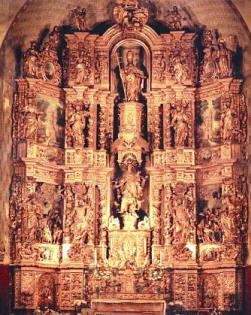
THE CRADLE OF FAUVISM
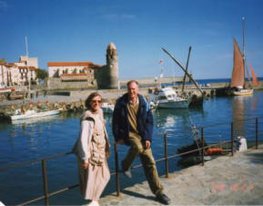
At the beginning of last century Collioure was a haven for artists, hence all the art galleries today. It started with Matisse bringing his friend André Derain to Collioure on holiday in 1905. Both artists were fascinated by the extraordinary light of the place and the special colour impact brought about by the sky, the sea, the pink rocks and the green-shimmering mountains. Matisse and Derain were the first to come, but many followed, well-known artists like Picasso, Dufy and Braque to name but a few. They established an artistic school here and thus fauvism was born.
CHURCH WITH LIGHTHOUSE TOWER
Opposite the fortress on the other side of the bay is the 17th century church of St Vincent, whose tower was once used as a lighthouse. The interior of the church is dominated by nine altarpieces in bombastic Baroque, elaborately carved and gilded. If you feel like a longer walk you could try Sentier de la Moulade which starts behind the church and runs along a steep sandbank with beguiling view over the sea and the nearby seaside resorts of Argelès-sur-Mer and St-Cyprien.
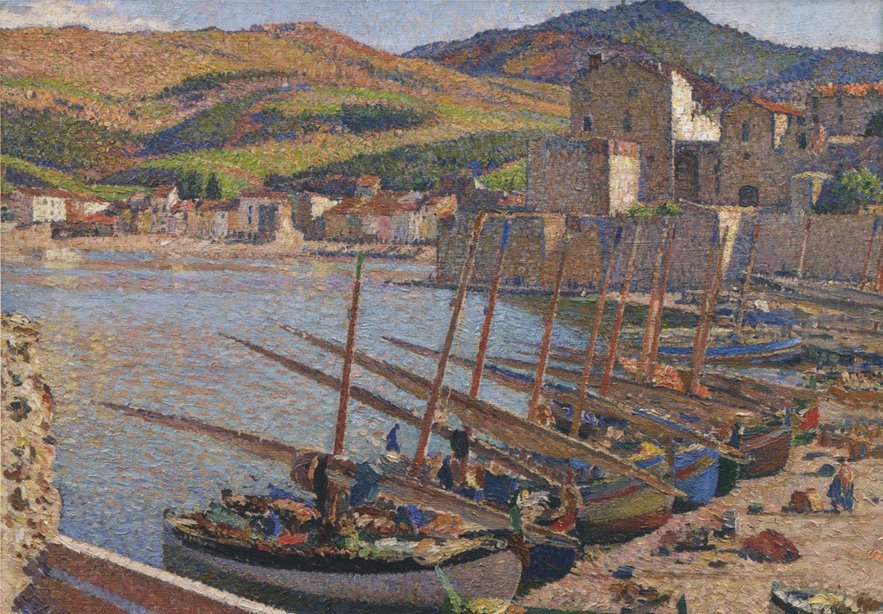
Costa del sol bjuder på många dina utflyktsmål.
Läs om mina förslag på vackra bergsturer.
Välkommen till min webbsida som handlar om trivsamma platser i Europa, utflykter i Andalusien och sköna promenader i Stockholm.
Klicka på det som intresserar dig!
Trevlig läsning
The tower of the church of St Vincent
The small boat harbour
Altarpiece of the church of St Vincent
Henri Martin